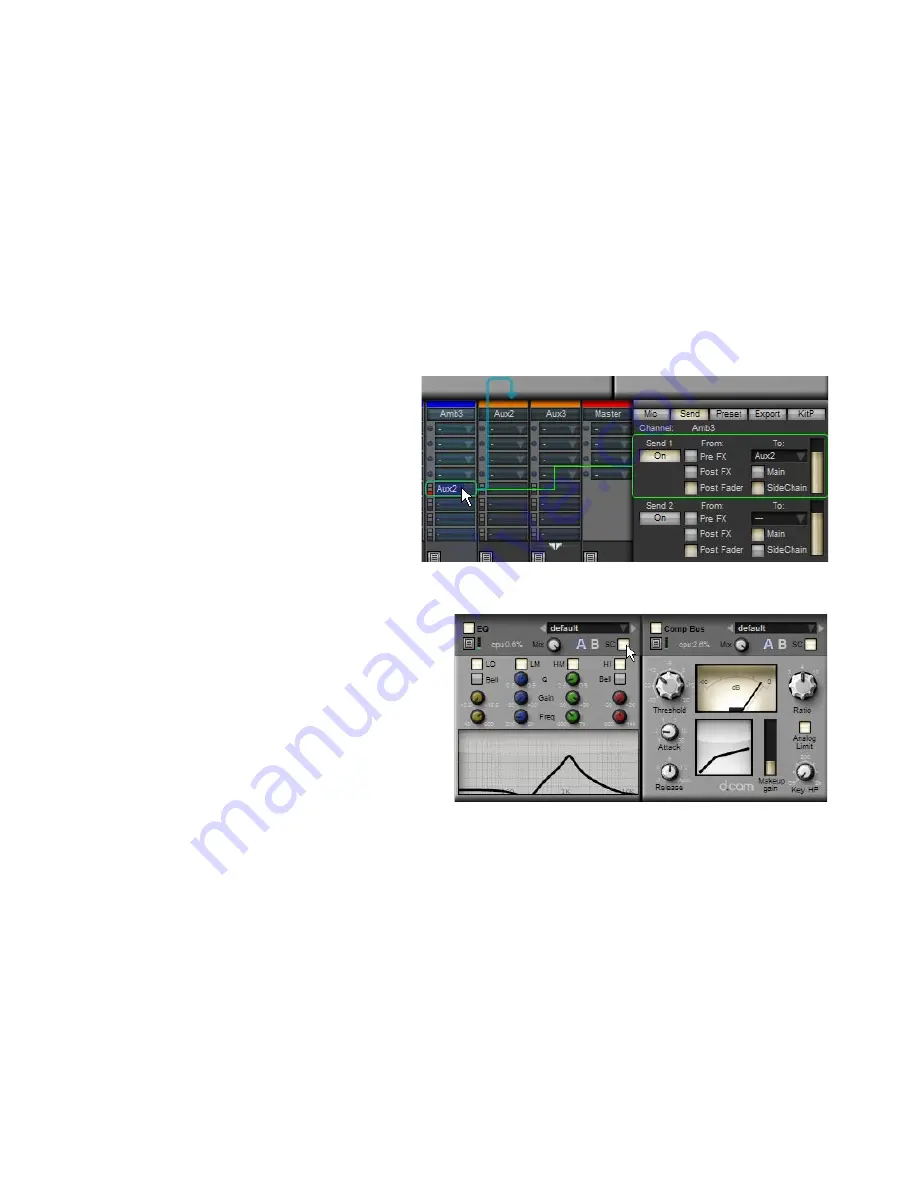
Using sends for parallel processing
Parallel processing for multiple channels is the main reason for using sends.
There are a variety of situations when you might want to use parallel processing. For example, you may want to send a small
amount of the hihat and snare channels to a reverb or flanger on an aux channel, or compress all the kick channels through a
compressor, while also leaving the original signals in the mix. These kinds of methods are commonly used in drum mixing.
Set up an aux channel with the desired FX on them. Create the required sends to the aux from each channel, and set each send
level as required.
If you only want to perform parallel processing on a single channel, you can simply use the Mix control on the channel’s FX.
Using Sidechaining
Sidechaining is the use of one signal to control the behaviour of an amplitude-sensitive processor that acts on another signal. It is
not heard in the output of the processor at all. It is a common feature in compressors, in order to compress one signal according
to the amplitude of another.
BFD2’s mixer allows you to use any internal channel as a sidechain source for a compressor or gate inserted on any other chan-
nel.
In addition, the sidechain is also available to feed the filter FM function in the Filter effect.
Setting up a sidechain
To set up a channel as a sidechain source for a com-
pressor on another channel, first set up a send to the
channel that is going to be compressed, and turn up
the level of the send.
Then, click the Sidechain button for the send in the
Sends inspector.
This Send is now routed to the sidechain of the channel
that you want to compress.
Now insert a compressor on the destination channel
and click the SC button on the compressor interface.
The compressor now reacts to the sidechain signal
rather than the actual signal in the channel.
EQ-ing the sidechain
A common problem when compressing is the existence of
excessive low-end frequencies in a sidechain signal causing
a compressor to react more than desired. The BFD2 com-
pressors include a sidechain highpass filter to quickly filter
out the low end from a sidechain signal.
However, you may need to apply a more complex EQ
process to a sidechain signal in order to isolate a particu-
lar band of frequencies, such as the mid ‘crack’ of a snare
sound. BFD2’s EQ processor provides a way of doing this.
Insert an EQ on the channel that you want to compress,
making sure that it is before the compressor in the list of
inserts. If you then click the SC button on the EQ interface,
the EQ processes the sidechain instead of the channel signal.
Содержание BFD2
Страница 1: ...2 0 1 Dec 2007 www fxpansion com...






























